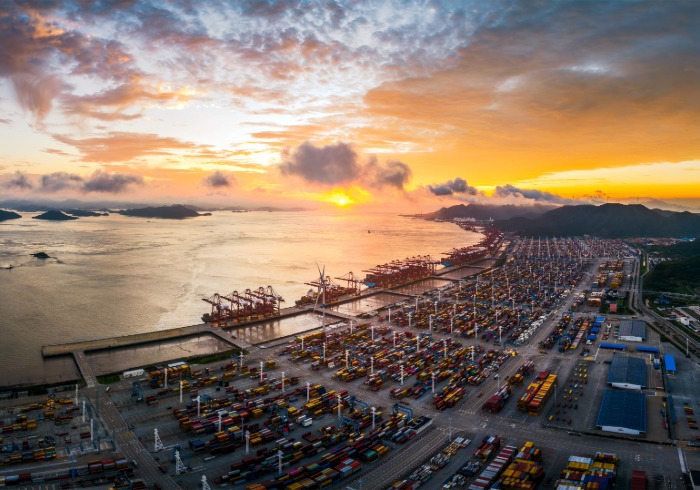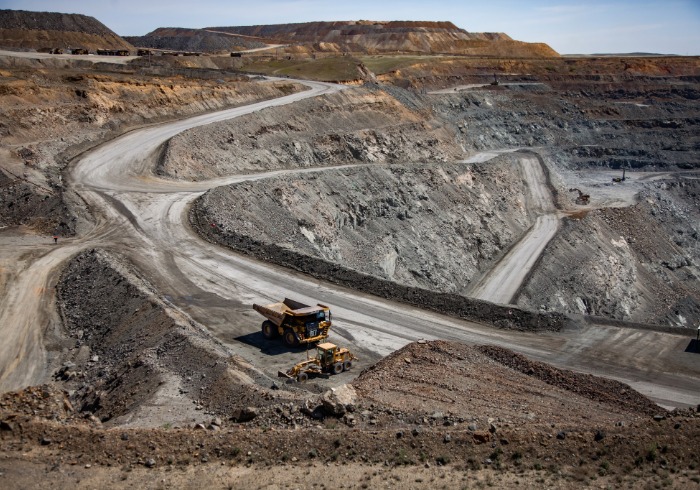For African states in dire need of vital infrastructure development, there is hope that new players – and an update to OECD Arrangement rules – could disrupt the financing landscape and generate affordable capital, particularly for deals aligned with sustainability and development goals. Felix Thompson assesses some of the key trends in Africa’s infrastructure finance sector.
New players
Across Africa, the need for critical projects such as roads, railways, hospitals and water facilities is vast. The African Development Bank (AfDB) estimates the continent suffers from an infrastructure funding gap of anywhere between US$68bn and US$108bn, while the UN says a third of the population lacks electricity and 40% of people live more than 5km from their nearest all-season roads.
With European and North American export credit agencies (ECAs) increasingly maxing out their capacity on the continent in support of their nations’ exporters, there is growing scope for newer players to win business – either taking on projects directly or as a reinsurer.
“We’re starting to see more £200mn-plus projects, which are quite big. That, combined with ECAs reaching market limits in some countries, means that to get a project over the line, you’ve got to bring in multiple ECAs,” says Simon Bunckenburg, head of infrastructure and construction at UK Export Finance (UKEF).
Poland’s Kuke is a notable example of an agency showing increased appetite for infrastructure deals on the continent, says Faruq Muhammad, global head of structured export finance at Standard Chartered.
“For the moment, Kuke has a preference for coming in as a reinsurer for the likes of UKEF or EKN, rather than fronting deals, because they’re not as well known in the market,” Muhammad tells GTR. But this could change, particularly with the agency eyeing up more business in Africa.
In an interview in July, Janusz Władyczak, chief executive of Kuke, told GTR that the agency has urged Polish exporters to take advantage of the many large infrastructure projects under development across Africa. While still a relatively minor player in the sector, the agency says it is exploring around 20 opportunities on the continent, with five of them expected to be finalised by the end of this year.
India’s export credit agency has also said it is looking to ramp up support for projects in an array of sectors, including solar, health and water.
Over the past decade, the Export-Import Bank of India (India Exim) has supplied US$12bn in credit lines to 42 African countries, with the funding primarily going to sovereign borrowers for large-scale infrastructure. The financing provided to date amounts to about 40% of the total extended under the agency’s line of credit programme.
N Ramesh, deputy managing director at India Exim, tells GTR the agency is ready to provide “a larger amount of financing” under the initiative as part of a wider government push to boost ties with Africa. Broadly, India is aiming to double bilateral trade with the continent to US$200bn by 2030.
Meanwhile, ECAs that are established on the continent are finding opportunities in markets where they previously struggled to gain a foothold.
Bunckenburg tells GTR that China’s diminished appetite for project financing on the continent has been a key factor enabling UKEF to expand into new markets in Francophone West Africa in recent years.
“Every country wants to have more than one partner to work with, and so the Chinese moving out has created opportunity for other countries to provide a balance with the more traditional partners in the region,” he says.
“In the last four or five years, we have done transactions in Senegal, Benin, Togo, Côte d’Ivoire, Cameroon and Gabon – all countries where we have done our first infrastructure transactions for many, many years.”
ECAs are also winning business in the down payment portion of ECA deals, which historically has only amounted to a 15% chunk of the contract value but requires African borrowers to take on short-tenor, commercial debt.
In January, Investec and UniCredit closed a €225mn facility to finance the building of three hospitals in Angola, supported by two ECAs. UniCredit arranged 85% of the financing, backed by Italy’s Sace, while Investec arranged financing for the remaining 15% under a commercial loan agreement, which was supported by the Export Credit Insurance Corporation of South Africa (ECIC).
“ECIC has been ingenious at working alongside and complementing international ECAs by supporting down payment facilities, subject to its content requirements,” Inal Henry, a director at project finance and ECA advisory firm ReagaInfra Capital, tells GTR. “It has created a nice niche for itself and is playing a critical role in the rollout of infrastructure.”
Pockets of activity
As shown in Berne Union’s recent State of the Industry report, ECA activity in Sub-Saharan Africa has been patchy in the wake of the Covid-19 crisis, with debt and political risks having grown in many nations on the continent.
The association’s analysis reveals that medium-to-long-term (MLT) export credit activity in Africa plunged to US$15bn in 2022, having stood at US$22bn the year prior and US$28bn in 2019 – the year before the pandemic hit.
“We have seen more activity in some markets in Sub-Saharan Africa, but it’s not across the continent. ECA-supported financing is not concessional, so it has to do with the viability of the borrower,” says Muhammad.
Senegal, Egypt and Angola together accounted for about 40% – or US$6bn – of the total MLT export credit support provided on the continent, while Ghana and Côte d’Ivoire were the next two busiest hubs for such business in 2022.
Muhammad points to Angola as another example of a market where ECAs were busy in the past year, with the country emerging from the Covid-19 crisis strongly due to higher oil prices.
The state saw GDP growth shoot up to 3.5% in 2022 from 1.1% the year prior, as the southern African nation – one of the largest fossil fuel producers on the continent – reaped the benefits of rising crude output and soaring prices.
At the same time, Muhammad tells GTR the Angolan government was keen to catch up on projects that had been delayed. This was in part due to the pandemic, but also as a result of a multi-year recession in the country from 2016 to 2021.
In January, the Angolan government secured a €225mn facility backed by Italy’s Sace to finance the building of three hospitals, as well as a €149mn social loan agreement covered by UKEF for the construction of a hospital in Kilamba.
In June, the Export-Import Bank of the United States approved a direct loan of US$900mn to Angola for the construction of two photovoltaic solar energy power plants. The following month, Angola’s finance ministry and Standard Chartered closed a €1.29bn agreement backed by Germany’s ECA, Euler Hermes, to finance the construction of photovoltaic electricity distribution infrastructure.
Insurers have gotten in on the act, too, with African Trade and Investment Development Insurance teaming up with Deutsche Bank in June on a US$305mn loan for the construction of a crucial road network.
There has been a wider push by the Angolan government, particularly since President João Lourenço came to power in 2017, to overhaul the economy. Not long after taking charge, Angola signed a US$3.7bn International Monetary Fund (IMF) deal and has since sought to boost the private sector.
Michal Ron, Sace’s chief international officer, tells GTR that political reforms in Angola over the past five years, including better debt management and a commitment to privatise state-owned companies, have made the country a more attractive market for international investors.
Still, Angola remains heavily reliant on hydrocarbons for more than 90% of export revenues and experts say there are headwinds facing the economy that will likely trigger a slowdown in ECA activity this year.
A report from Fitch Ratings notes that the Angolan kwanza depreciated 30% in the month to June, reflecting a “significant reduction” of US dollar availability in the domestic foreign currency market. Projections indicate that inflation is set to surge to 17.1% next year, while Fitch expects government debt-to-GDP levels to grow to nearly 79% at the end of 2023, from approximately 65% last year. Previously, the ratio was forecast to fall to 58% this year.
“As Angola looks at its debt-to-GDP levels and foreign currency levels, it will start deprioritising or slowing down some of these projects,” Muhammad tells GTR.
The ‘S’ in ESG
Within the export finance industry, there has been an increasing focus on the potential of ECAs to contribute to meeting wider sustainability and development goals, moving beyond their traditional role of facilitating export growth. There is optimism that recent changes made to the OECD Arrangement on Officially Supported Export Credits, as part of an April modernisation package, could further advance this trend.
Under the new rules, maximum repayment terms have been lengthened from 18 years to 22 years for green projects and extended from 10 years to 15 years for all other projects. Industry experts say this will significantly reduce the yearly debt obligations for African borrowers, spurring infrastructure development.
Standard Chartered’s Muhammad cites priority infrastructure, such as hospitals, roads, bridges and ports, as the types of projects that will benefit most from the longer tenors.
“In the past, water projects could get 18-year tenors, but hospitals only 10-year repayment terms. That was a disconnect between how the OECD looked at social, sustainable development projects and how commercial banks looked at the issue,” he tells GTR.
Healthcare has emerged as a key area of interest for ECAs, and according to Bunckenburg at UKEF, there has been an uptick in big-ticket transactions in the sector.
“You might have financed one hospital in the past, now contracts are being awarded for several at a time,” he says, pointing to a recent €241mn UKEF-backed facility for the development of six hospitals in Côte d’Ivoire.
Still, some participants in the export finance industry harbour concerns about the prevailing emphasis on environmental objectives among some ECAs, which they perceive as impeding projects geared towards social development.
Henry at ReagaInfra Capital says it is “easier for the ECAs to concentrate on the ‘E’ in ESG” and that deals categorised as benefitting social goals are at risk of being overlooked.
“We absolutely need more projects around the ‘S’ factor, particularly those not deemed to be green or for critical minerals,” Henry tells GTR. She points out that even conventional mining projects can have indirect socio-economic benefits, such as boosting employment and developing roads and water infrastructure for rural communities.
Ultimately, ECAs are working to fulfil wider government objectives surrounding the energy transition.
As shown in a May survey conducted by the OECD of its members, more than 60% of respondents – out of the 34 agencies who replied – said they have been given a mandate to consider climate change issues.
Nonetheless, Ram Shalita, CEO and partner of Bluebird Finance and Projects, an Israel-based company specialising in export finance solutions, says he’s concerned about the increasingly stringent environmental requirements being imposed by some ECAs on companies and African sovereign borrowers.
He suggests there has been a shift from a few years ago, when only a limited number of projects underwent in-depth scrutiny, to a scenario today where nearly every project is treated as high-risk, requiring costly and extensive environmental assessments.
He cites a water project Bluebird Finance worked on that required an environmental study cost of nearly €800,000 as an example of the growing financial burden for borrowers seeking ECA-backed support.
“The environmental process has become heavier and more and more detailed. If you’re talking about oil, or gas, it is the right thing to do, but in all other cases, it is not. We generally go to other ECAs that are more flexible,” he adds.







